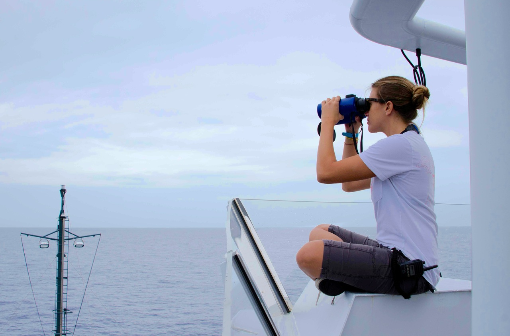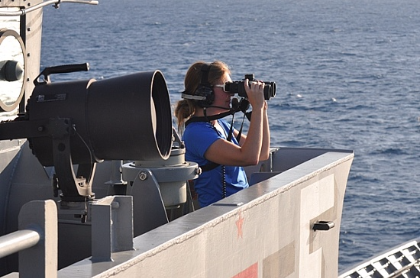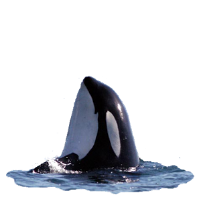Corso Marine Mammals Observer
corso riconosciuto JNCC
Evento unico in Italia
4 Febbraio 2017 presso sede Oceanlab Nettuno (Roma)
Relatore
Carolyn Barton
Il corso è in lingua inglese
Solo 15 posti disponibili
Costo del Corso 380 euro
Per prenotare inviare i propri dati anagrafici ed un recapito telefonico all'indirizzo mammiferimarini@libero
Il Corso per Marine Mammals Observer riconosciuto dalla JNCC si terrà a Roma, il 4 febbraio 2017 e sarà guidato da Carolyn Barton grande esperta MMO che ha lavorato su indagini sismiche, impianti di perforazione, trebbiatura e le operazioni di dragaggio. Carolyn è è docente riconosciuta per corsi di formazione per MMO da circa 20 anni. Il corso è aperto a coloro che desiderano lavorare come MMO nella piattaforma continentale del Regno Unito o in Paesi dove venga richiesto il riconoscimento JNCC. In caso di superamento del corso gli studenti riceveranno un attestato di partecipazione JNCC (Joint Nature Conservation Committee) riconosciuto MMO
A Marine Mammal Observer course for UK waters will be held in Rome, on February 4th 2017 and will be led by Carolyn Barton
experienced MMO who has worked on seismic surveys, drilling rigs, pile-driving and dredging operations. Carolyn has also been providing training courses for MMOs for 20 years. The course
is open to those who wish to work as MMOs on the UK Continental Shelf. On successful completion of the course the students will receive a certificate of attendance at JNCC (Joint Nature Conservation
Committee) recognised MMO course.
JNCC GUIDELINES:
The Joint Nature Conservation Committee has specific guidelines to minimize the risk of disturbance and injury to marine mammals in the course of various industrial activities in the waters of the
United Kingdom. The guidelines cover seismic surveys, pile-driving and the use of explosives.
MARINE MAMMALS OBSERVER:
A Marine Mammal Observer (MMO) is a qualified professional responsible for the implementation of mitigation measures to protect marine animals during industrial and other activities ( seismic
surveys, use of explosives, pile-driving,military and dredging) that generate underwater noise.
As a result of growing concern about the effects of high levels of artificial noise emitted in the oceans, particularly on cetaceans - known for their acoustic sensitivity - environmental
regulations have been introduced in an attempt to minimize negative impacts on marine life.
The main role of a Marine Mammal Observer is to visually monitor for the presence of marine mammals and advise and implement the guidelines established by national organizations in
collaboration with the laws of their country, in order to reduce the possible risk of disturbance and injury to marine mammals and sometimes also sea turtles.
In addition to visual monitoring by MMOs, PAM operators often use passive acoustic monitoring (PAM) to detect marine mammals acoustically by means of hydrophones MMOs and PAM operators usually have a
strong background in biology and marine conservation. Increasingly, the industry is using as 'good practice' an attitude of commitment to the environment and voluntarily engages MMOs as independent
observers in areas where there are still no government regulations.
Programma del Corso
MMO training course content
The MMO training course follows the syllabus set out below:
Introduction to marine mammals -
- taxonomy
- biological functions including senses and vocalisations
- functional hearing groups
- issues affecting marine mammals, including acoustic disturbance
Sound -
- sources of man-made noise in the oceans
- measurement of sound
- sound propagation
- potential effects of acoustic disturbance on marine mammals
- acoustic thresholds for injury of marine mammals
Legislation -
- Wildlife and Countryside Act
- European Habitats and Species Directive
- Conservation (Natural Habitats &c.) Regulations
- Offshore Petroleum Activities (Conservation of Habitats) Regulations
- ASCOBANS
- Offshore Marine Conservation (Natural Habitats, &c.) Regulations
Background to the JNCC guidelines -
- their origin and development
- mitigation principles
- applicability of the guidelines
- the consent process
Introduction to seismic surveys -
- principles - basic theory and aims of seismic surveying
- practice - operational procedures and equipment
- types of survey - site, 2D, 3D, 4D, 4C, OBC, VSP
Detailed examination of requirements of the JNCC guidelines -
- planning before the survey - baseline information, risk assessment, best practice measures
- use of MMOs - training, experience, requirement for dedicated MMOs
- pre-shooting searches - how to conduct a pre-shooting search, how to maintain awareness of when a pre-shooting search is required, interpretation of navigation screens
- delays in shooting - when to delay, frequency of delays, how to deal with delays
- soft-starts - how to achieve a soft-start, time-sharing, breaks in operations, soft starts for site surveys and VSP, soft starts and airgun testing
- line changes - duration of line change and compliance with the guidelines
- undershooting - why and how this is achieved and compliance with the guidelines
- PAM - use of PAM as a mitigation tool
- reporting after the survey - what to include in a report
- summary and comparison of key features of the guidelines for seismic surveys, pile driving operations and the use of explosives (this can be expanded where appropriate, for example for clients specialising in piling or explosives)
The role of the MMO -
- monitoring marine mammal presence
- provision of advice on compliance with the guidelines
- monitoring compliance with the guidelines
- reporting
- pre-survey and mobilisation meetings
- other personnel - interaction with the MMO
- situations that may be encountered and how to deal with these
Reporting requirements -
- JNCC Marine mammal recording forms
- demonstration of use of recording forms
- practice examples of recording forms
- other information to report
- submission of reports
Visual monitoring -
- choosing an observation position
- scanning
- visual cues
- influence of weather
- communication with crew
- visual range estimation - rangefinder stick, reticle binoculars, comparison with known reference points
- use of binoculars - choosing binoculars, setting binoculars
Passive acoustic monitoring (PAM) -
- advantages and disadvantages
- types of PAM systems - towed arrays and static buoys
- acoustic range estimation
- software - Pamguard
- using PAM for mitigation
- reporting PAM data
Identification of marine mammals -
- identification guides
- features used in identification of pinnipeds
- features used in identification of cetaceans
- demonstration of identification features of species that may be encountered
- practice at identifying marine mammals
Practicalities of working as an MMO -
- certificates needed
- equipment needed
- working through an agency







